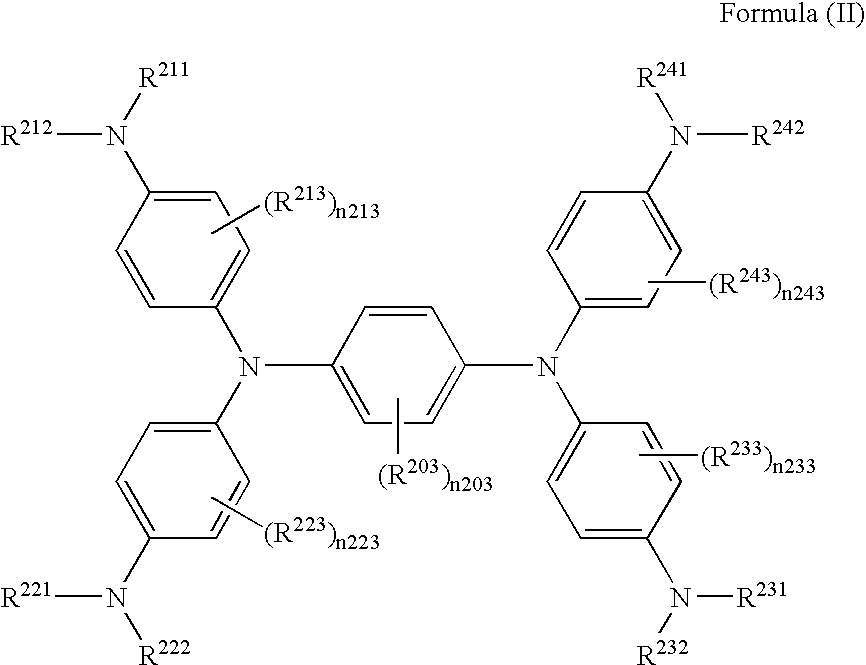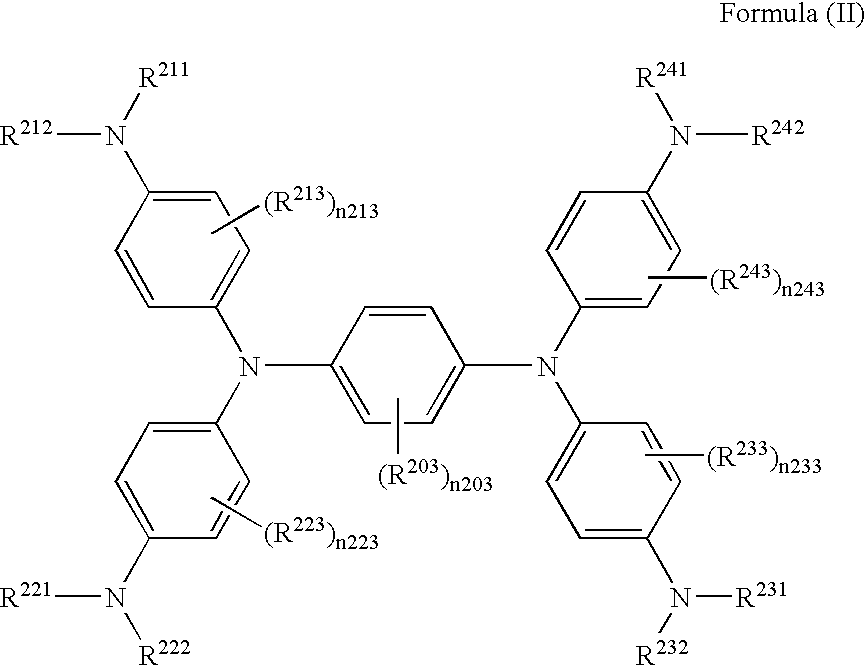Near-infrared-absorbing material and near-infrared-absorbing filter
a technology of near-infrared absorption and filter, which is applied in the direction of photosensitive materials, lighting and heating apparatus, instruments, etc., can solve the problems of easy photodecomposition, the near-infrared absorption dye contained therein is difficult to achieve satisfactory balance, and the naphthalocyanine dye described above cannot achieve satisfactory balan
- Summary
- Abstract
- Description
- Claims
- Application Information
AI Technical Summary
Benefits of technology
Problems solved by technology
Method used
Image
Examples
example 1
Preparation of Near-Infrared-Absorbing Filter
[0112]Hundred ml of chloroform was added to 10 g of polystyrene, a luminescent agent (compound (I-a)) in the amounts shown in Table 1 or 2, and 0.1 g of near-infrared-absorbing compound (compound (XII-6)), the resultant was stirred at 40° C. for 15 minutes to dissolve the components in the solvent, and the resulting solutions were applied onto glass plates and dried by air blowing at room temperature to prepare near-infrared-absorbing filters as samples.
[0113]—Light Resistance Test—
[0114]The samples obtained above were irradiated for 3 days with 95,000-lux light from a xenon lamp, and the spectral absorption maximum absorption (γ1) of the compound (XII-6) after irradiation relative to the spectral absorption maximum absorption (γ0) of the compound before irradiation was measured with U-4100 spectrophotometer (manufactured by Hitachi High Technologies) to determine the residual degree (γ1 / γ0) which was then used as an indicator for evaluat...
example 2
Preparation of Near-Infrared-Absorbing Filter
[0116]Hundred ml of chloroform was added to 10 g of polystyrene, a luminescent agent (compound (I-a)) in the amounts shown in Table 3 or 4, and 0.1 g of near-infrared-absorbing compound (compound (XII-a)), the resultant was stirred at 40° C. for 15 minutes to dissolve the component in the solvent, and the resulting solutions were applied onto glass plates and dried by air blowing at room temperature to prepare near-infrared-absorbing filters as samples.
[0117]—Light Resistance Test—
[0118]The samples obtained above were irradiated for 3 days with 95,000-lux light from a xenon lamp, and the spectral absorption maximum absorption (γ1) of the compound (XII-a) after irradiation relative to the spectral absorption maximum absorption (γ0) of the compound before irradiation was measured with U-4100 spectrophotometer (manufactured by Hitachi High Technologies) to determine the residual degree (γ1 / γ0) which is then used as an indicator for evaluatin...
PUM
| Property | Measurement | Unit |
|---|---|---|
| molar ratio | aaaaa | aaaaa |
| wavelength | aaaaa | aaaaa |
| wavelength | aaaaa | aaaaa |
Abstract
Description
Claims
Application Information
 Login to View More
Login to View More - R&D
- Intellectual Property
- Life Sciences
- Materials
- Tech Scout
- Unparalleled Data Quality
- Higher Quality Content
- 60% Fewer Hallucinations
Browse by: Latest US Patents, China's latest patents, Technical Efficacy Thesaurus, Application Domain, Technology Topic, Popular Technical Reports.
© 2025 PatSnap. All rights reserved.Legal|Privacy policy|Modern Slavery Act Transparency Statement|Sitemap|About US| Contact US: help@patsnap.com



